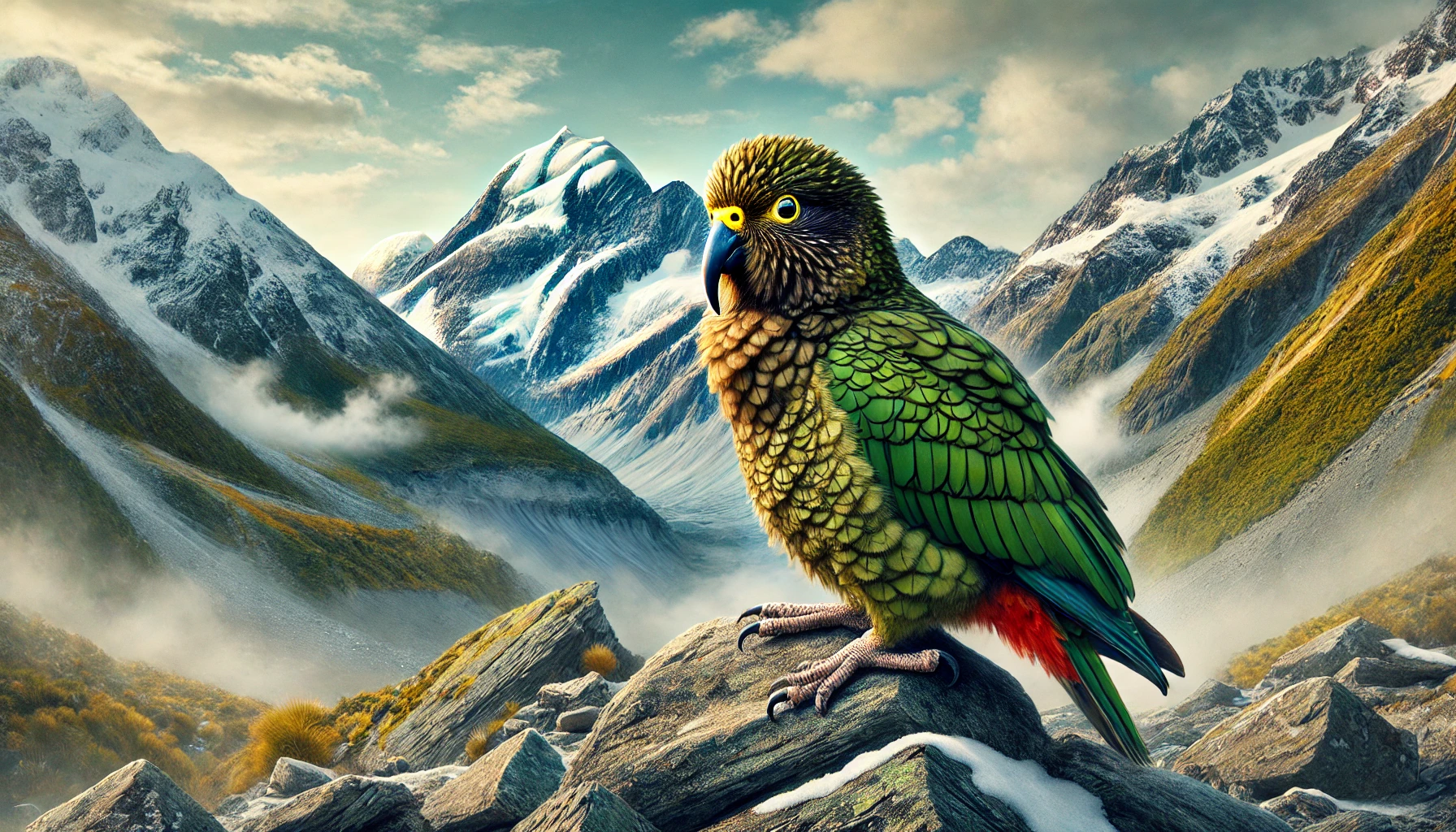Known as the world’s only alpine parrot, the Kea parrot is a fascinating and intelligent bird native to the mountainous regions of New Zealand. With its striking green plumage, splashes of orange under its wings, and inquisitive nature, the Kea has earned a reputation as one of the smartest and most mischievous birds on the planet. Despite its playful antics, the Kea plays a vital role in its ecosystem and faces significant conservation challenges.
Kea Parrot Facts

Fact 1: Kea Parrots Have High Intelligence
The Kea parrot is renowned for its incredible intelligence, often compared to that of primates. Researchers have observed Keas solving complex puzzles, using tools, and even working together to achieve goals. In one experiment, Keas demonstrated the ability to manipulate objects and collaborate to access food rewards, showcasing advanced problem-solving skills.
This intelligence isn’t just for survival; it’s also a source of play. Keas are known to engage in activities purely for enjoyment, such as sliding down snowy slopes or tossing objects back and forth. Their playful behavior has made them a favorite among tourists and researchers, but it also occasionally brings them into conflict with humans.
Fact 2: Bold and Curious
The Kea’s curiosity and boldness are legendary. They are notorious for exploring and dismantling objects left by humans, including cars, backpacks, and even tents. Their strong beaks and problem-solving nature enable them to peel off rubber seals, unzip bags, and sometimes cause significant damage to property. These antics have earned the Kea a reputation as both endearing and troublesome.
This behavior isn’t malicious; it’s a reflection of their need to explore and interact with their environment. In the wild, this curiosity helps them find food and adapt to changing conditions. However, in areas frequented by humans, their playful exploration can lead to unintended consequences.
Fact 3: Nature’s Only Alpine Parrot
Living in the harsh alpine regions of New Zealand, Keas have developed unique adaptations to thrive in this challenging environment. Their strong, curved beaks are ideal for foraging, allowing them to dig through snow and tear into tough vegetation. They have also been known to scavenge food from carcasses, making them opportunistic feeders.
Keas are highly social birds, living in flocks that communicate through a variety of calls. One of their most distinctive sounds is a high-pitched “kea,” which serves as both a greeting and a way to coordinate with other members of their group. This social structure helps them survive in an environment where cooperation is key.
Fact 4: Classified as Endangered
Despite their intelligence and adaptability, Keas are classified as endangered, with fewer than 5,000 individuals estimated to remain in the wild. Habitat loss, introduced predators, and human conflict are major threats to their survival. In the past, Keas were even hunted due to their perceived threat to livestock, further reducing their population.
Conservation efforts are now underway to protect these remarkable birds. Initiatives include habitat restoration, predator control, and public education campaigns to reduce human-wildlife conflict. Organizations in New Zealand are working to ensure that future generations can continue to marvel at the Kea’s intelligence and playful nature.
The Kea parrot is much more than a mischievous bird; it is a symbol of adaptability and resilience in one of the world’s most challenging environments. With its boundless curiosity, remarkable intelligence, and undeniable charm, the Kea reminds us of the importance of preserving the unique species that share our planet. Protecting the Kea not only safeguards a vital part of New Zealand’s natural heritage but also ensures that this playful genius continues to inspire and delight us all.

